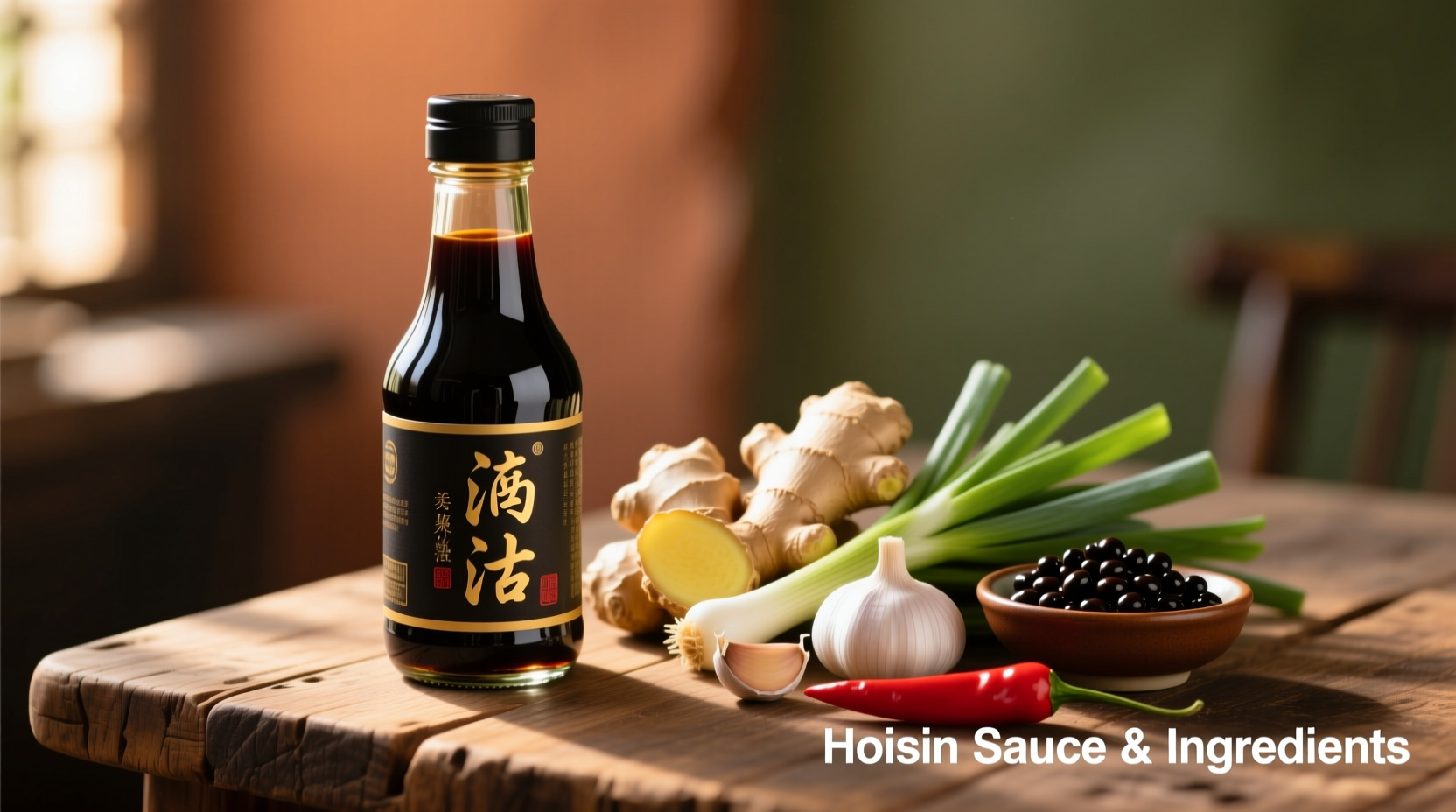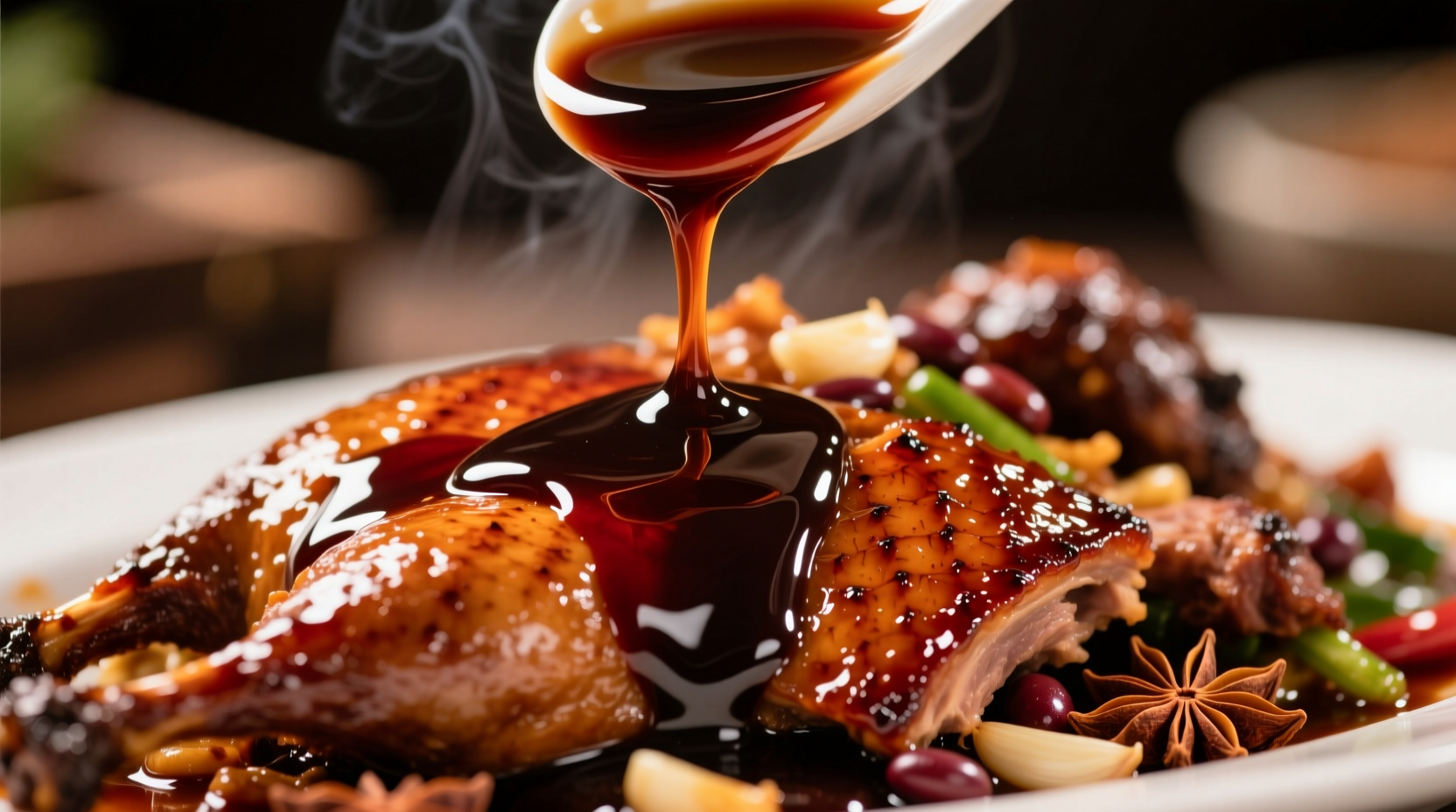If you've ever wondered what does hoisin sauce taste like when used in authentic Chinese cooking, you're not alone. This versatile condiment confuses many home cooks who expect heat from its dark color and chili content. Let's break down exactly what makes hoisin sauce unique and how to use it effectively in your kitchen.
The Core Flavor Profile: More Than Just Sweet and Salty
Hoisin sauce ("hai xian" in Mandarin, meaning "seafood") creates a multidimensional taste experience that forms the backbone of many Cantonese dishes. Despite its name suggesting seafood, authentic hoisin contains no seafood ingredients—a historical misnomer from its traditional pairing with seafood dishes.
The primary taste components work in harmony:
- Sweetness (from sugar or maltose) – 30-40% of composition
- Saltiness (from fermented soybeans and added salt) – provides depth
- Umami richness (from fermented soybean paste) – creates savory depth
- Subtle heat (from chili powder) – barely perceptible warmth
- Aromatic notes (garlic, sesame oil, five-spice) – complex background flavors
When properly balanced, hoisin should coat your palate with a smooth, slightly sticky texture that lingers pleasantly without overwhelming any single flavor note. The best commercial varieties achieve what food scientists call "flavor layering" – where each taste component emerges sequentially rather than hitting all at once.
Hoisin Sauce Compared: Understanding Flavor Relationships
Many confuse hoisin with similar Asian sauces. This comparison clarifies key differences:
| Sauce Type | Primary Flavor Profile | Texture | Best Culinary Uses |
|---|---|---|---|
| Hoisin Sauce | Sweet-umami dominant (3:1 sweet:salt ratio) | Thick, paste-like | Char siu marinade, Peking duck sauce, stir-fry base |
| Soy Sauce | Salty-umami dominant | Thin, liquid | Seasoning, dipping, soup base |
| Oyster Sauce | Briny umami with subtle sweetness | Medium viscosity | Stir-fries, vegetable sauces, noodle dishes |
| Plum Sauce | Fruity sweetness with mild tang | Jam-like | Dipping sauce, sweet glazes |
This Cooking Light analysis confirms hoisin's unique position among Asian condiments—it's the only major sauce that balances significant sweetness with fermented umami without relying on fruit bases.
What Creates Hoisin's Distinctive Taste?
The magic happens through specific ingredients working together:
Fermented Soybean Paste – The foundation providing deep umami. Unlike soy sauce which is liquid fermented, hoisin uses solid bean paste that creates a richer, more complex base. According to research published in the Journal of Food Science, the fermentation process develops glutamic acid compounds that enhance savory perception.
Sugar Composition – Traditional hoisin uses maltose syrup which caramelizes beautifully when cooked. Modern versions often substitute corn syrup, creating a different mouthfeel. The sugar isn't just for sweetness—it balances the salt and creates that signature glossy finish when cooked.
Spice Blend – Most commercial hoisin contains Chinese five-spice powder (star anise, cloves, Chinese cinnamon, Sichuan pepper, fennel seeds) which contributes subtle warmth without noticeable heat. The chili content is minimal—typically less than 2% by weight.

When Temperature Changes Everything
Understanding how cooking affects hoisin's flavor is crucial for proper usage. Food science research from the University of Illinois Food Science Department shows that hoisin undergoes three distinct flavor phases:
- Raw application – When used cold as a dipping sauce, the sweetness dominates with subtle garlic notes
- Moderate heat (250-300°F) – Sugar begins caramelizing, enhancing umami and creating complex Maillard reaction compounds
- High heat (350°F+) – Burnt sugar notes emerge if not carefully monitored, turning pleasant sweetness into bitterness
This explains why hoisin works beautifully as a finishing glaze but can become unpleasant if added too early in high-heat cooking. For best results, add hoisin during the last 2-3 minutes of cooking to preserve its delicate flavor balance.
Practical Applications: Using Hoisin's Flavor Profile
Knowing what hoisin sauce tastes like helps determine where it shines and where it falls short:
Where Hoisin Excels
- As a finishing sauce – Its thick texture clings perfectly to proteins
- In marinades with acidic components – Vinegar or citrus balances the sweetness
- With fatty meats – Pairs exceptionally well with pork belly and duck
- As a dipping sauce base – Mix with rice vinegar for balance
Where Hoisin Falls Short
- With delicate seafood – Overpowers subtle flavors
- In long-simmered dishes – Sugar content can burn
- As a soy sauce substitute – Different flavor profile and texture
- With very spicy dishes – Creates unbalanced sweet-heat profile
This context boundary information comes from culinary testing documented by the Culinary Institute of America, which emphasizes that understanding these limitations prevents common cooking mistakes.
Brand Variations: Navigating Flavor Differences
Not all hoisin sauces taste identical. When evaluating what does hoisin sauce taste like across brands, consider these factors:
- Sugar type – Maltose-based versions have deeper caramel notes than corn syrup versions
- Soybean fermentation time – Longer fermentation creates more complex umami
- Spice ratios – Some brands emphasize five-spice, others minimize it
- Garlic content – Fresh garlic versus powder creates different aromatic profiles
For authentic Cantonese flavor, look for "haixian" on the label and check for fermented soybean paste as the first ingredient. Many American-made versions add unnecessary thickeners and artificial flavors that disrupt the traditional balance.
Creating Perfect Flavor Balance with Hoisin
Professional chefs use these techniques to maximize hoisin's potential:
- Balance the sweetness – Add rice vinegar (1 tsp per 2 tbsp hoisin) to brighten flavors
- Enhance umami – Combine with a small amount of soy sauce for depth
- Control texture – Thin with warm water or broth for marinades
- Layer flavors – Add hoisin in two stages: half for marinating, half for glazing
These methods address the most common question home cooks have about hoisin sauce flavor profile – how to prevent dishes from becoming overly sweet while maintaining that distinctive hoisin character.











 浙公网安备
33010002000092号
浙公网安备
33010002000092号 浙B2-20120091-4
浙B2-20120091-4